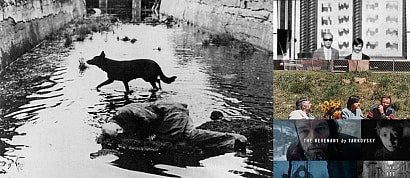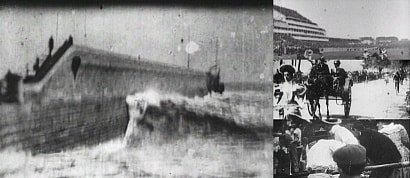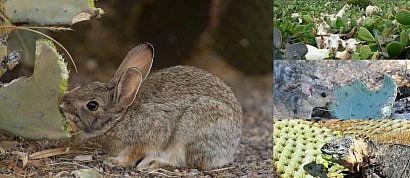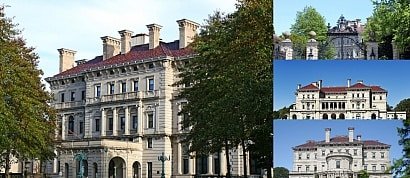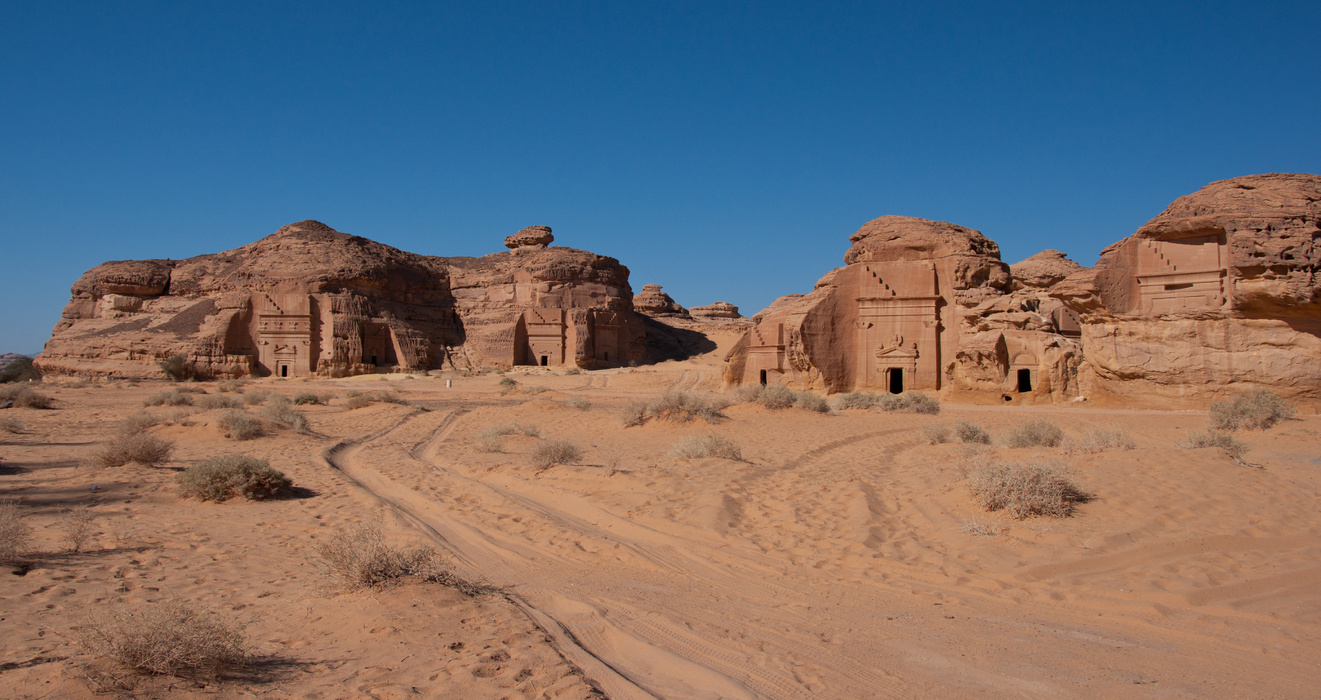
Arabian Desert
The Arabian Desert is a vast desert wilderness in Western Asia. It stretches from Yemen to the Persian Gulf and Oman to Jordan and Iraq. It occupies most of the Arabian Peninsula, with an area of 2,330,000 square kilometers. It is the fifth largest desert in the world and the largest in Asia.

Atacama Desert
The Atacama Desert is a desert plateau in South America covering a 1000-km strip of land on the Pacific coast, west of the Andes mountains. The Atacama desert is one of the driest places in the world, as well as the only true desert to receive less precipitation than the polar deserts.

Black Rock Desert
The Black Rock Desert is a semi-arid region of lava beds and playa, or alkali flats, situated in the High Rock Canyon Emigrant Trails National Conservation Area, a silt playa 100 miles north of Reno, Nevada that encompasses more than 300,000 acres of land and contains more than 120 miles of historic trails. It is in the northern Nevada section of the Great Basin with a lakebed that is a dry remnant of Pleistocene Lake Lahontan.

Chihuahuan Desert
The Chihuahuan Desert is a desert and ecoregion designation covering parts of northern Mexico and the southwestern United States. It occupies much of West Texas, parts of the middle and lower Rio Grande Valley and the lower Pecos Valley in New Mexico, and a portion of southeastern Arizona, as well as the central and northern portions of the Mexican Plateau. It is bordered on the west by the extensive Sierra Madre Occidental range, along with northwestern lowlands of the Sierra Madre Oriental range. On the Mexican side, it covers a large portion of the state of Chihuahua, along with portions of Coahuila, north-eastern Durango, the extreme northern part of Zacatecas, and small western portions of Nuevo León.
With an area of about 362,000 km2 (139,769 sq mi), it is the third largest desert of the Western Hemisphere and the second largest in North America, after the Great Basin Desert.

Gibson Desert
The Gibson Desert, an interim Australian bioregion, is a desert that covers a large dry area in the state of Western Australia and is still largely in an almost "pristine" state. It is about 155,000 square kilometres (60,000 sq mi) in size, making it the fifth largest desert in Australia, after the Great Victoria, Great Sandy, Tanami and Simpson deserts.

Gobi Desert
The Gobi Desert is a vast, arid region in northern China and southern Mongolia, 1.295 million km² in area. It's known for its dunes, mountains and rare animals such as snow leopards and Bactrian camels. In the Gobi Gurvansaikhan National Park, the Khongoryn Els sand dunes are said to sing when the wind blows. The park also features the deep ice field of Yolyn Am canyon. Dinosaur fossils have been found at the red "Flaming Cliffs" of Bayanzag.

Kalahari Desert
The Kalahari Desert is a large semi-arid sandy savanna in Southern Africa extending for 900,000 square kilometres, covering much of Botswana, parts of Namibia and regions of South Africa.

Libyan Desert
The Libyan Desert forms the northern and eastern part of the Sahara Desert. It describes that part of the Sahara that lies within the present-day state of Libya; it also historically describes the desert to the south of Ancient Libya, a territory which lay to the east of the present-day state.

Mojave Desert
The Mojave Desert is an arid rain-shadow desert and the driest desert in North America. It is in the southwestern United States, primarily within southeastern California and southern Nevada, and it occupies 47,877 square miles. Very small areas also extend into Utah and Arizona.

Namib Desert
The Namib is a coastal desert in southern Africa. The name Namib is of Khoekhoegowab origin and means "vast place". According to the broadest definition, the Namib stretches for more than 1,200 miles along the Atlantic coasts of Angola, Namibia and South Africa, extending southward from the Carunjamba River in Angola, through Namibia and to the Olifants River in Western Cape, South Africa.

Negev Desert
The Negev is a large desert region in southern Israel. Its main city is Be’er Sheva. Here, the Old City is home to the Negev Museum of Art, with contemporary Israeli and international exhibitions. Nearby is Abraham’s Well, a cultural center with interactive exhibits about the story of Abraham. East of the city, Tel Be’er Sheva is a prehistoric settlement mound with ruins, plus a lookout tower with desert views.

Nubian Desert
The Nubian Desert is in the eastern region of the Sahara Desert, spanning approximately 400,000 km² of northeastern Sudan and northern Eritrea, between the Nile and the Red Sea. The arid region is rugged and rocky and contains some dunes, it also contains many wadis that die out before reaching the Nile.

Ocucaje Desert
The Ocucaje desert in Peru, an area of 2,000 square miles, was once a shallow sea which was probably destroyed during the cataclysmic event which created the Andes cordillera about 30 million years ago. What is left is the planet's largest graveyard of marine fossils, many visible in the windswept dunes.

Patagonian Desert
The Patagonian Desert, also known as the Patagonian Steppe or Magellanic Steppe, is the largest desert in Argentina and is the 8th largest desert in the world by area, occupying 673,000 square kilometers.

Rub' al Khali Desert
The Rub' al Khali desert is the largest contiguous sand desert in the world, encompassing most of the southern third of the Arabian Peninsula. The desert covers some 650,000 km² including parts of Saudi Arabia, Oman, the United Arab Emirates, and Yemen. It is part of the larger Arabian Desert.

Sahara Desert
The Sahara is a desert located on the African continent. It is the largest hot desert in the world, and the third largest desert overall after Antarctica and the Arctic. Its area of 9,200,000 square kilometres is comparable to the area of China or the United States.

Salar de Uyuni Desert
Salar de Uyuni is the world's largest salt flat at 4,086 square miles in the Daniel Campos Province in Potosí, Bolivia, near the crest of the Andes and is at an elevation of 11,995 feet above sea level.
The Salar was formed as a result of transformations between several prehistoric lakes. It is covered by a few meters of salt crust, which has an extraordinary flatness with the average elevation variations within one meter over the entire area of the Salar. Following rain, a thin layer of dead calm water transforms the flat into the world's largest mirror, 80 miles across.

Sonoran Desert
The Sonoran Desert is a North American desert which covers large parts of the Southwestern United States in Arizona and California and of Northwestern Mexico in Sonora, Baja California and Baja California Sur. It is the hottest desert in Mexico. It has an area of 260,000 square kilometers.

Tanami Desert
The Tanami Desert is a desert in northern Australia situated in the Northern Territory and Western Australia. It has a rocky terrain with small hills, an area of 184,500 km². The Tanami was the Northern Territory's final frontier and was not fully explored by Australians of European descent until well into the twentieth century.

Thar Desert
The Thar Desert, also known as the Great Indian Desert, is a large arid region in the northwestern part of the Indian subcontinent that covers an area of 200,000 km² and forms a natural boundary between India and Pakistan. It is the world's 17th largest desert, and the world's 9th largest subtropical desert.
People who voted for this also voted for
Film Diary of 2023
In Praise of Andrei Tarkovsky
Movies Watched (2021)
Sara Sampaio Red Carpet All Star
The Favourite Films of Critics and Filmmakers
Great films about the afterlife
Sandra Bullock - Movies I Have Viewed
Nicole Kidman - Movies I Have Viewed
Charles Sheldon Photographs (2)
Remembering Doris Day
Actor and Politician
Licence Renewed (2004)
The Pioneering Films of R.W. Paul
Movie Character Wearing Life Jacket
Auction - Movies
More lists from kathy
Animals Drinking Beer
My Animals Eating and Drinking Collection
Animals Eating Cactus
The Breakers
Jon Voight Films Viewed by Kathy
Alan Arkin Films Viewed by Kathy
Icelandic Horses
 Login
Login
